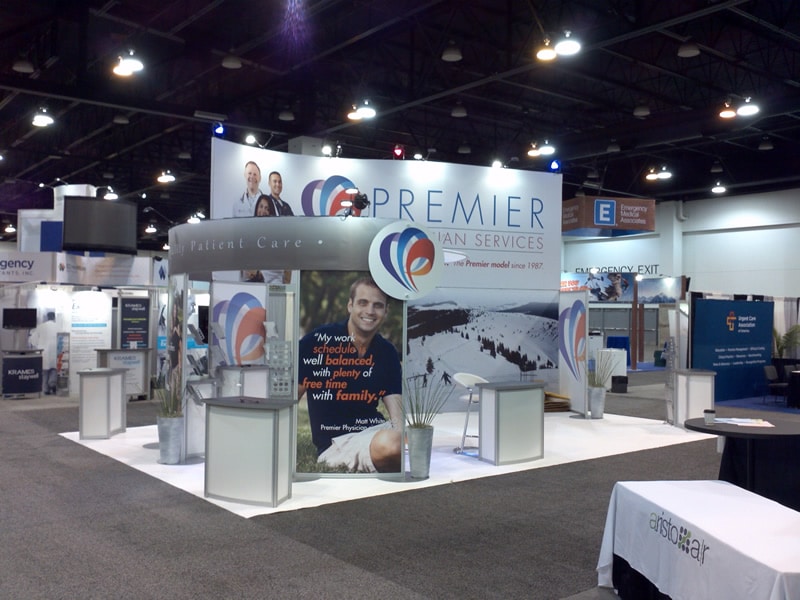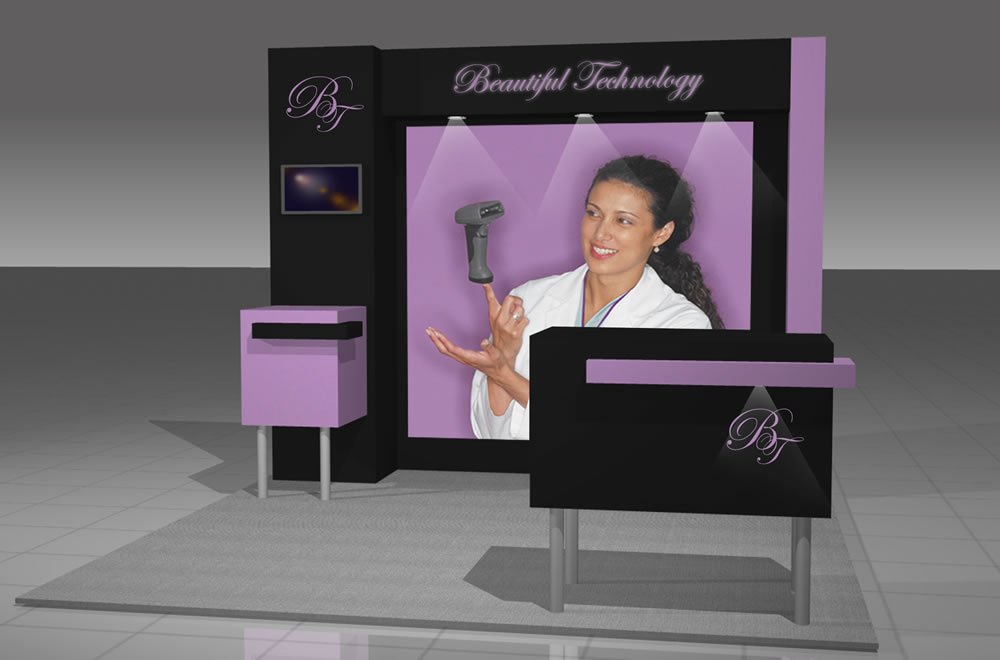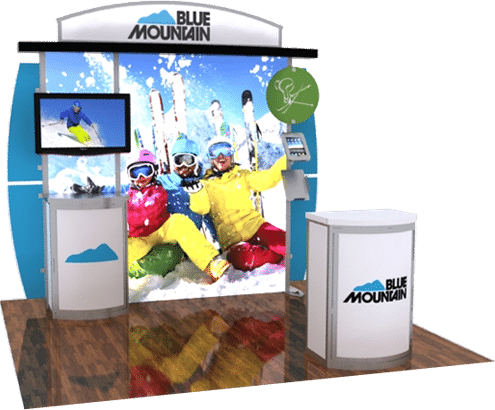Trade Show Planning For Newbies
You’ve just been given the responsibility for your company’s trade show exhibiting. Right now, you may be confused as to whether offerings of congratulations or sympathies are appropriate!
But by gathering sufficient information and taking the necessary steps, you can get through your next show (even if it’s your first show) like a champ. Here’s how.
 Before you can successfully exhibit at a trade show, you need to know a few things:
Before you can successfully exhibit at a trade show, you need to know a few things:
• name of show
• show dates (including move-in and move-out dates)
• booth number
• booth size
• space configuration (inline, island or peninsula)
• show rules and regulations (you’ll find these in the exhibitor’s manual)
• payment due dates (also in the exhibitor’s manual)
• service order dates (for electrical, plumbing, rigging, flowers, etc.)
• your budget
Knowing these things, you can begin planning with a calendar handy, so you can determine when you need to make necessary payments. You can also begin planning for things like how your exhibit will be shipped and who will staff the booth.
Once you’ve read the exhibitor’s manual (which is usually an online document these days), you’ll know when deposits and other payments are due. You should schedule these on your calendar. Missing deadlines can be costly, so a little advance planning can save you a lot—both in terms of money and headaches, down the road.
You’ll also need to familiarize yourself with a few terms that may be new to you:
General Services Contractor: this is the group that manages everything related to getting your exhibit in shape on the show floor. At their service desk on the show floor, they’ll make arrangements to get your booth into the exhibit hall, provide workers to set it up (if necessary), and supply electricians for power and internet connectivity and riggers for any signage that hangs above your booth. You’ll also go to them to rent computers and audio visual equipment (like flatscreen TVs), and to order flowers or plants for decoration.
Show Producer: This is usually a trade association that sponsors the show, handles the promotion of the show and charges you for the opportunity to exhibit at their show.
Drayage: This is the industry term in the US for handling the movement of your exhibit (they don’t charge a drayage fee in Europe, it’s built into the show costs). You’ll be charged a fee (based on weight or size) to bring your booth from the exhibit hall’s loading dock to your booth space, and to get it out of the hall when the show’s over.
Bill of Lading: This is a document your shipper will provide that details the items being shipped. Be certain this document is accurate. You are the “shipper,” they are the “carrier.”
In the U.S., booth space is sold in square feet, usually in multiples of ten feet by ten feet (Europe and some other venues use the metric system). You can order a single ten by ten space (giving you an “inline” configuration, meaning your booth will be in line with other exhibitors along one aisle, visible from that side only).
You can also request a ten by twenty foot space, which could be either inline or in a “peninsula” arrangement (like the end cap at a supermarket, your booth would be at the end of an aisle facing to the front, while also having exposure to the left and right).
The final configuration available is an “island” space, which is twenty by twenty feet (or larger), giving you exposure on all four sides.
You also need to know how you’re going to exhibit. Does your company currently have an exhibit you’ll be using? Will you be ordering a new exhibit or renting booth properties from an exhibit company? If you’ll be acquiring a brand new booth, this process can take months, so the earlier you begin planning, the better.
If you’re not using an existing booth, the first choice is whether you want to rent or purchase your exhibit. There are advantages to both approaches, depending on how often you exhibit, whether the size of your space at this particular show is much larger than your existing or normal booth space, whether you have several shows at the same time and simply don’t have enough displays, etc.
If you decide you need a new booth, the next step is to determine is the size of exhibit space you plan to use most often. Even if you occasionally use more square footage, you need to plan for your smallest layout. You can always add to your exhibit for larger shows.
In this marketplace, it is said that you can choose fast, cheap, or good trade show displays, but you can only pick two out of the three attributes! This refers to the challenge in creating a high quality product or service, and also doing it quickly AND inexpensively.
In other words, if you have ample time, things will cost less, and you can also select high quality. If you’re in a hurry, you’ll get dinged substantially for every aspect of your exhibiting program, and quality may suffer – for sure, your shipping costs will hurt too! So advance planning is imperative.
Acquiring a new exhibit is a complex process that could take an entire blog post to explain. I’ll just touch on the most important aspects here. Of course, if you need assistance with anything related to your exhibit properties, feel free to contact us directly at (425) 556-9511.
Take a look at the different types of booth structures, and also the three general categories of displays: custom, modular and used.
If you’re purchasing a custom exhibit, every aspect of it is created from scratch, so you have unlimited choices in terms of design. This can be the most expensive type of exhibit unless you are sure to select a custom trade show display system that is easy to reconfigure, so that you can take a section from your 10×20 wall and use it as a table top display, or rebuild your trade show wall into a custom tower. This may seem unreasonable to expect, but we have many modular custom design tools such as the MultiQuad and Next displays that will allow exactly this level of flexibility!
With a modular design, you’re choosing from hundreds of components that can be arranged in countless ways. Most modular designs allow you to essentially create a custom booth, but you do that using existing modular parts.
A modular design also allows you the opportunity to add or subtract additional components, so that for future shows, you can shrink or expand your booth size, depending on your needs.
You can also look at purchasing a used exhibit (which may be either custom or modular), and simply update its look with your corporate colors and graphics.
Finally, include these elements in your planning:
• List your goals for exhibiting.
• Determine a method for measuring your success at achieving those goals.
• Create a written show plan, including:
– your goals and measurement metrics,
– a schedule for booth workers,
– activities that need to be completed before, during and after the show,
– who will be responsible for each of those activities.
• Develop a clear message for your exhibit, which will appear in your exhibit graphics and promotional materials.
Do what you can to make this process enjoyable. Working a trade show doesn’t need to be a hellish experience. Plan for an evening out for all your show staff, and give yourself some down time on the schedule, so you don’t burn out.
We’re always excited by the opportunity to help new exhibitors reach their goals. At American Image Displays, we can provide everything you need for a successful exhibit, and we’re able to offer you a custom rendering of what your exhibit will look like before you purchase. For more information, or to discuss your needs for a new exhibit—even if you’re in a rush—call us at (425) 556-9511 or email [email protected].
For more, check out our general trade show planning tips or our article on how to find the best show.

